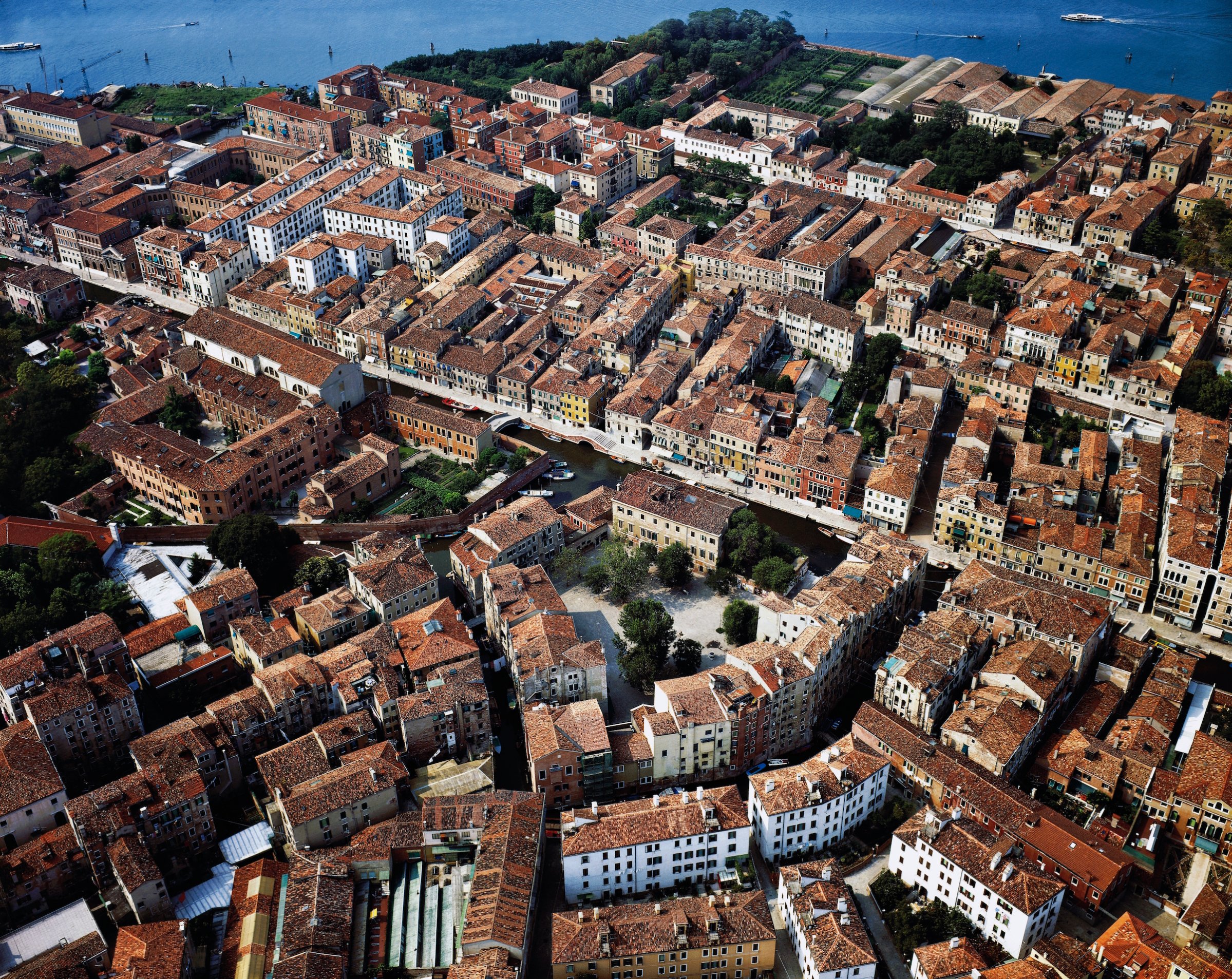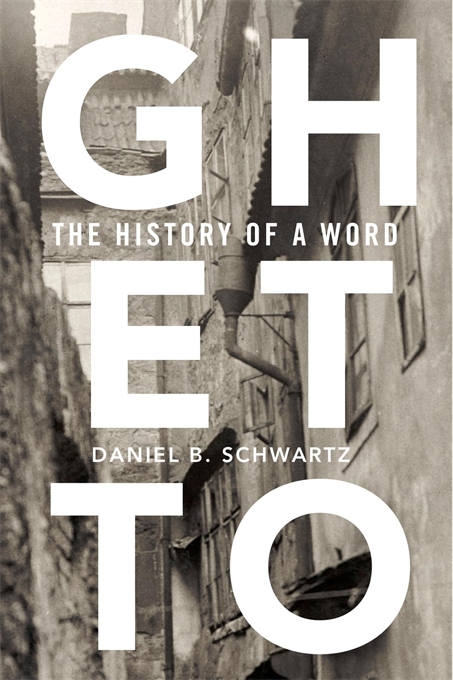
Today, for many Americans, the word “ghetto” conjures images of run-down and crime-ridden African American segregated areas—“inner cities,” in a common euphemism. This connotation is relatively recent; it has only become mainstream in the past 70 years or so. Beforehand, the term was primarily associated with Jewish urban quarters, and its changing meaning illustrates the troubling tenacity of such an idea.
The linkage between Jews and “ghetto” began in the early 16th century. In 1516, as a compromise offering to those agitating for the city to be Christian-only, Venice confined its Jewish population to a little island in the northern part of the city known as the New Ghetto. The name “Ghetto” likely derived from the Venetian verb gettare, meaning to pour or to cast, and probably can be traced to the earlier presence of a copper foundry in what was to become the all-Jewish district. From the 16th to the 18th century, the institution of the legally compulsory and physically enclosed exclusively Jewish enclave spread to Rome, Florence Mantua and a host of other Italian towns and cities. The Venetian label stuck, and these mandatory Jewish areas throughout Italy came to be called ghettos too.
The emancipation of the Jews of Italy starting in the late 18th century led to the dismantling of these ghettos, culminating in the dissolution of the last surviving ghetto in Europe—the ghetto of Rome—in 1870. But the word was harder to get rid of.
In the ensuing decades, the word “ghetto” was resurrected to refer to new big-city Jewish immigrant neighborhoods, such as Manhattan’s Lower East Side (once labeled the “New York Ghetto”). These areas were densely crowded but legally voluntary and more mixed between Jews and non-Jews in reality than in popular perception. Later still, during World War II, the Nazis revived the ghetto as a site of enforced Jewish segregation. As places of mass starvation and disease, and eventually of deportation to the death camps and killing fields, however, the Nazi ghettos bore little in common with the original Italian ghettos beyond the name.
Meanwhile, African Americans had begun employing the term “ghetto” to refer to their own residential segregation as early as the 1910s, at a time when several American cities were passing zoning ordinances that prohibited black people from living on blocks where the majority of residents were white. (Such laws were found unconstitutional by the Supreme Court in 1917.) Black usage of “ghetto” became more widespread amidst the legal battle over restrictive covenants in the aftermath of World War II.
A 1948 report on Segregation in Washington—published the same year that the Supreme Court banned judicial enforcement of restrictive covenants in Shelley v. Kraemer—contained a chapter on housing segregation entitled “Ghettos in the Capital.” The authors made no bones about their intent to evoke the specter of the ghettos of the Holocaust in the way they referred to the residential segregation of blacks. “Ghetto is an ugly word,” one chapter opened. “To a Dane it is ugly. To any Nazi victim. To anyone who saw how Hitler placed a yellow mark on Jews so they could be made to live apart, suffer apart, die apart. To an American it is ugly.”
The new black referent for “ghetto” truly came to the fore in the 1960s, as urban race riots starting in the middle of the decade vaulted segregated areas onto the front pages of newspapers and onto television screens across the nation and the globe. Digital history resources reveal how usage of the word “ghetto” soared in the 1960s and 1970s and how phrases like “Negro ghetto” or, increasingly, “black ghetto” came to eclipse “Jewish ghetto.”
Get your history fix in one place: sign up for the weekly TIME History newsletter
The African-American psychologist Kenneth Clark’s 1965 book Dark Ghetto probably did more than any other individual work to connect “ghetto” and “black” in the mainstream media. The title of the book was doubly appropriate. For Clark, the darkness of the “dark ghetto” was evident not only in the skin color of its inhabitants but in the fact that he saw such areas as bleak, desperate places, devoid of faith in a better future and awash in self-destructive behavior and social vices, even as they were defended by others as the home of vibrant culture and community
The transference of the word “ghetto” from Jewish to black enclaves stirred controversy. Some pointed to the lack of statutory laws restricting African Americans to prescribed areas, but that argument overlooked a whole range of state actions—from the enforcement of restrictive covenants before 1948, to support for redlining and the denial of home insurance for blacks in the suburbs, to the building of public housing in already segregated districts—that made black residential concentration far more than purely a case of de facto segregation.
Others, echoing the recent firestorm over calling immigration detention centers “concentration camps,” protested the use of a term associated with the Holocaust. In 1964, the Jewish intellectual Marie Syrkin wrote, “The term ‘ghetto,’ now often prefixed with the adjective ‘black,’ has a specific Jewish origin: it means literally a quarter to which Jews were restricted by law.” She then added, “In the immediate as well as historic experience of the Jews a ghetto is not a metaphor; it is a concrete entity with walls, stormtroopers, and no exit save the gas chamber.”
Some African-American thinkers objected to the label for what they saw as its stigmatization of black communities. In a 1965 interview, the author Ralph Ellison described the portrayal of Harlem as a ghetto as “one of the most damaging misuses of a concept that has ever come about in the United States.” If a black writer, he claimed, accepted the description of “Harlem as a ‘Negro ghetto’—which means, to paraphrase one of our writers, ‘piss in the halls and blood on the stairs’—he’ll never see the people of whom he wishes to write.”
Even as the word “ghetto” has come today to be seen first and foremost as part of the African American experience, its usage is still not without controversy. Some view “ghetto,” especially when used colloquially as an adjective meaning deviant or tawdry, as slanderous and racist. Others believe the term powerfully conveys the intractable, prison-like nature of black segregation, the reality that residence in inner-city neighborhoods remains involuntary for most, practically if not legally.
What is clear is that this disturbingly resilient word—“ghetto”—has not lost its capacity to unsettle and provoke.

Daniel B. Schwartz teaches history and Judaic Studies at The George Washington University. He is the author of Ghetto: The History of a Word, available now from Harvard University Press.
More Must-Reads from TIME
- Why Trump’s Message Worked on Latino Men
- What Trump’s Win Could Mean for Housing
- The 100 Must-Read Books of 2024
- Sleep Doctors Share the 1 Tip That’s Changed Their Lives
- Column: Let’s Bring Back Romance
- What It’s Like to Have Long COVID As a Kid
- FX’s Say Nothing Is the Must-Watch Political Thriller of 2024
- Merle Bombardieri Is Helping People Make the Baby Decision
Contact us at letters@time.com